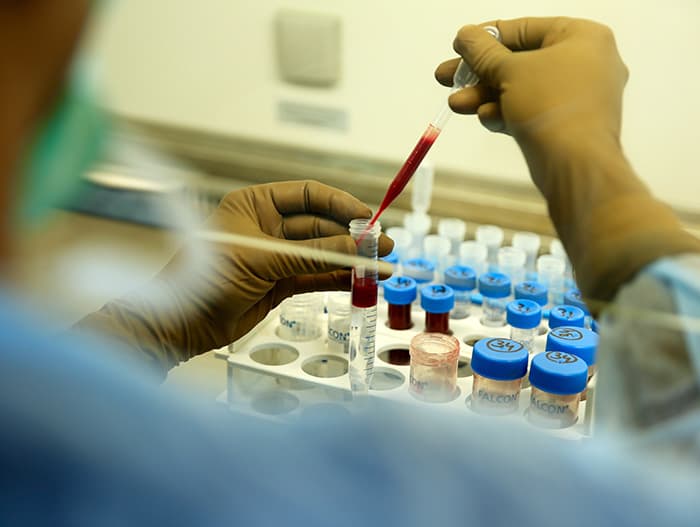Science of Regenerative Medicine: How Stem Cell Therapy Works
Introduction to Regenerative Medicine
Regenerative medicine is a groundbreaking field that aims to restore or replace damaged tissues and organs in the body. One of the most promising approaches within this field is stem cell therapy. Which utilizes the unique properties of stem cells to promote tissue regeneration. In this article, we will delve into the science behind regenerative medicine. Let’s explore how stem cell therapy works to address a wide range of medical conditions.
Understanding Stem Cells
Stem cells are undifferentiated cells that have the remarkable ability to develop into various types of specialized cells in the body. They serve as the body’s natural repair system, replenishing damaged tissues and maintaining normal physiological functions. There are several types of stem cells, including embryonic stem cells, adult stem cells, and induced pluripotent stem cells.
Role of Stem Cells in Regeneration
Stem cells play a pivotal role in the process of tissue regeneration, serving as the body’s natural repair system. When tissue damage occurs due to injury or disease, stem cells are activated and recruited to the site of injury. These versatile cells possess the unique ability to differentiate into various specialized cell types, such as muscle cells, neurons, or skin cells, depending on the specific needs of the tissue being repaired. Through the process of differentiation, stem cells replenish damaged or lost cells, promoting tissue repair and regeneration. Additionally, stem cells secrete growth factors and cytokines that stimulate nearby cells, accelerate the healing process, and modulate the immune response, creating an optimal environment for regeneration to occur.
Mechanisms of Action
Differentiation
One of the key mechanisms by which stem cell therapy works is through the process of differentiation. Stem cells can differentiate into specialized cell types such as neurons, muscle cells, or skin cells, depending on the specific needs of the tissue being repaired. This ability to adapt and transform into different cell types is what makes stem cells so valuable in regenerative medicine.
Secretion of Growth Factors
Stem cells also produce and release a variety of growth factors and cytokines that promote tissue repair and regeneration. These bioactive molecules stimulate nearby cells to proliferate, migrate, and differentiate, thereby accelerating the healing process. Additionally, they help reduce inflammation and modulate the immune response, creating a favorable environment for tissue regeneration to occur.
Immunomodulation
In addition to their regenerative properties, stem cells possess immunomodulatory capabilities that play a crucial role in the healing process. They can regulate the activity of immune cells, such as T cells and macrophages, to suppress inflammation and promote tissue tolerance. This immunomodulatory effect is particularly beneficial in conditions characterized by excessive immune activation, such as autoimmune diseases and inflammatory disorders.
Applications of Stem Cell Therapy
Orthopedic Injuries
Stem cell therapy has shown promising results in the treatment of orthopedic injuries, including osteoarthritis, tendonitis, and ligament tears. By injecting stem cells directly into the affected joint or tissue, physicians can promote cartilage repair, reduce pain and inflammation, and improve overall joint function. This minimally invasive approach offers a potential alternative to surgery for patients suffering from musculoskeletal disorders.
Neurological Disorders
Stem cell therapy holds great potential for the treatment of neurological disorders, such as Parkinson’s disease, Alzheimer’s disease, and spinal cord injuries. By replacing damaged neurons and promoting neural regeneration, stem cells may help restore lost neurological function and improve patients’ quality of life. Ongoing research in this area aims to optimize stem cell-based therapies for better outcomes in patients with various neurological conditions.
Cardiovascular Diseases
Cardiovascular diseases, including heart failure, myocardial infarction, and peripheral artery disease, represent a significant health burden worldwide. Stem cell therapy offers a promising approach for repairing damaged cardiac tissue and restoring heart function. By delivering stem cells directly into the heart muscle, researchers hope to stimulate the growth of new blood vessels, improve cardiac contractility, and reduce the risk of adverse cardiovascular events.
Challenges and Considerations
Safety Concerns
While stem cell therapy holds immense potential for treating a wide range of medical conditions. It also presents certain safety concerns. One of the main challenges is the risk of uncontrolled cell growth and tumor formation, known as tumorigenicity. Researchers must carefully monitor the behavior of transplanted stem cells to ensure their safe and effective integration into the host tissue.
Ethical and Regulatory Issues
The use of embryonic stem cells in research and therapy has sparked ethical debates due to concerns about the destruction of human embryos. As a result, alternative sources of stem cells, such as adult stem cells and induced pluripotent stem cells, have gained prominence in the field of regenerative medicine. However, regulatory frameworks governing the use of stem cell-based therapies vary across different countries, posing challenges for clinical translation and commercialization.
Future Directions
Personalized Medicine
Advancements in stem cell research are paving the way for personalized medicine approaches tailored to individual patients’ needs. By harnessing the power of stem cells and other regenerative technologies, physicians can develop customized treatments that address the underlying causes of disease and optimize therapeutic outcomes. This personalized approach holds the potential to revolutionize healthcare delivery and improve patient outcomes across diverse medical specialties.
Tissue Engineering
In addition to stem cell therapy, tissue engineering techniques are being increasingly utilize to create bioengineered tissues and organs for transplantation. By combining stem cells with biomaterials and growth factors, researchers can fabricate functional tissues that closely mimic the structure and function of native tissues. This approach has significant implications for organ transplantation, regenerative surgery, and tissue repair in patients with complex medical needs.
Stem cell therapy represents a groundbreaking approach to regenerative medicine. This offer new hope for patients with a wide range of medical conditions. By harnessing the unique properties of stem cells, researchers and clinicians can promote tissue repair, reduce inflammation, and restore normal function to diseased or injured tissues. Despite the challenges and uncertainties that lie ahead, the field of regenerative medicine continues to advance rapidly, bringing us closer to a future where debilitating diseases can be effectively treated or even cured.












